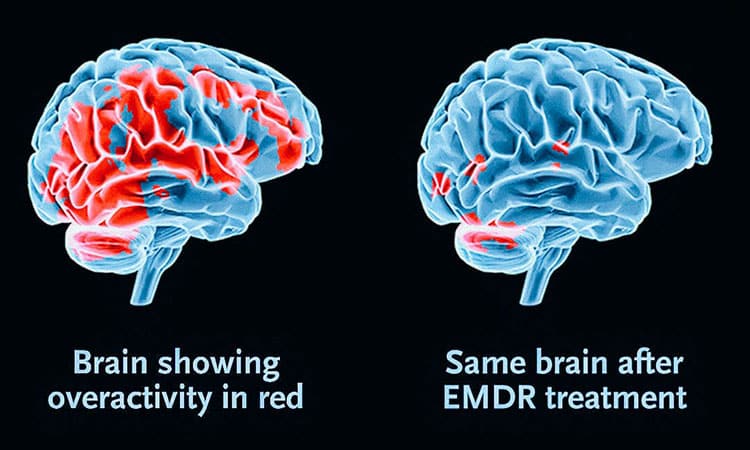Understanding EMDR
EMDR (Eye Movement Desensitization and Reprocessing) is a structured form of trauma therapy designed to help the brain reprocess distressing memories. By using bilateral stimulation such as guided eye movements or tapping, EMDR enables emotional blocks to shift, allowing traumatic experiences to be integrated into your broader memory network without the same psychological charge.
Why High-Functioning Professionals Consider EMDR
You’re used to performing under pressure, solving complex problems, and leading with precision. But even high-functioning professionals can carry unresolved trauma that shows up as burnout, irritability, sleep disruption, or emotional detachment. If you’re skeptical about trauma therapy or curious whether EMDR is worth your time, you’re not alone. This article breaks down what actually happens in your first EMDR session, and why it might be one of the most productive hours of your healing journey.
What Happens During Your First EMDR Session
The first EMDR session is about preparation, not immediate reprocessing. Your therapist will begin with a structured intake, asking questions to understand your history, identify potential trauma targets, and assess your readiness. You’ll be introduced to grounding techniques to manage emotional intensity methods like breathwork, visualization, or tactile cues.
The therapist will also explain how bilateral stimulation works. Depending on your preference and clinical needs, this may involve eye movements, alternating tones, or gentle tapping. If you feel ready, some therapists may begin light reprocessing work. But the pace is always tailored to your nervous system’s tolerance, with constant check-ins to ensure stability.
The Neuroscience Behind EMDR Therapy
Functional MRI studies reveal that EMDR therapy reduces hyperactivity in the brain’s fear center, the amygdala. Unlike traditional talk therapy, which emphasizes cognitive insight, EMDR targets deeper, nonverbal memory networks. This often leads to faster emotional shifts without requiring you to relive every detail of your trauma verbally.
Is EMDR Right for You?
This approach is particularly well-suited for high-performing individuals dealing with anxiety, perfectionism, or chronic overwhelm linked to past trauma. However, EMDR isn’t recommended in cases of active psychosis, severe dissociation, or unmanaged substance use. Your therapist will assess these factors carefully.
How EMDR Differs from Traditional Trauma Therapy
While many therapies rely on insight and narrative work, EMDR helps the brain process trauma without lengthy discussion. You may work with emotions, physical sensations, or vague impressions rather than complete memories. For professionals who find verbal processing exhausting or slow, EMDR can offer a more efficient path toward relief.
Setting Expectations: What You Need to Know
- Sessions are 60–90 minutes and begin with building trust, not diving into trauma.
- You are always in control. Sessions pause as needed.
- You might feel tired or emotional afterward. Schedule light activities or quiet time to integrate the work.
Common Myths About EMDR
Myth: EMDR erases memories.
Fact: Memories stay intact, but their emotional grip weakens.
Myth: One session can resolve deep trauma.
Fact: While shifts can be immediate, complex trauma typically requires multiple sessions.
Helpful Preparation for Your First Appointment
Consider journaling light reflections, such as moments that trigger tension or recurring stress patterns. Avoid detailing traumatic events before your session unless your therapist recommends it. Post-session, gentle movement like walking can support emotional processing. Most importantly, choose a certified clinician through the EMDR International Association to ensure quality care.
FAQs
Q: Is EMDR appropriate soon after a traumatic event?
A: Yes, but therapists may prioritize safety and stabilization before processing to prevent retraumatization.
Q: What if I can’t recall specific memories?
A: EMDR can work with sensations, emotions, or images that don’t form a full narrative. Clarity often unfolds during the process.
Q: Why choose EMDR over traditional therapy?
A: EMDR often appeals to those who prefer experiential, body-informed methods that bypass the need for repeated storytelling.Take the First Step
EMDR isn’t just about healing it’s about reclaiming clarity, performance, and emotional resilience. If you’re ready to explore this path, search for a certified therapist at the EMDRIA directory or review our professional guide to trauma recovery.






